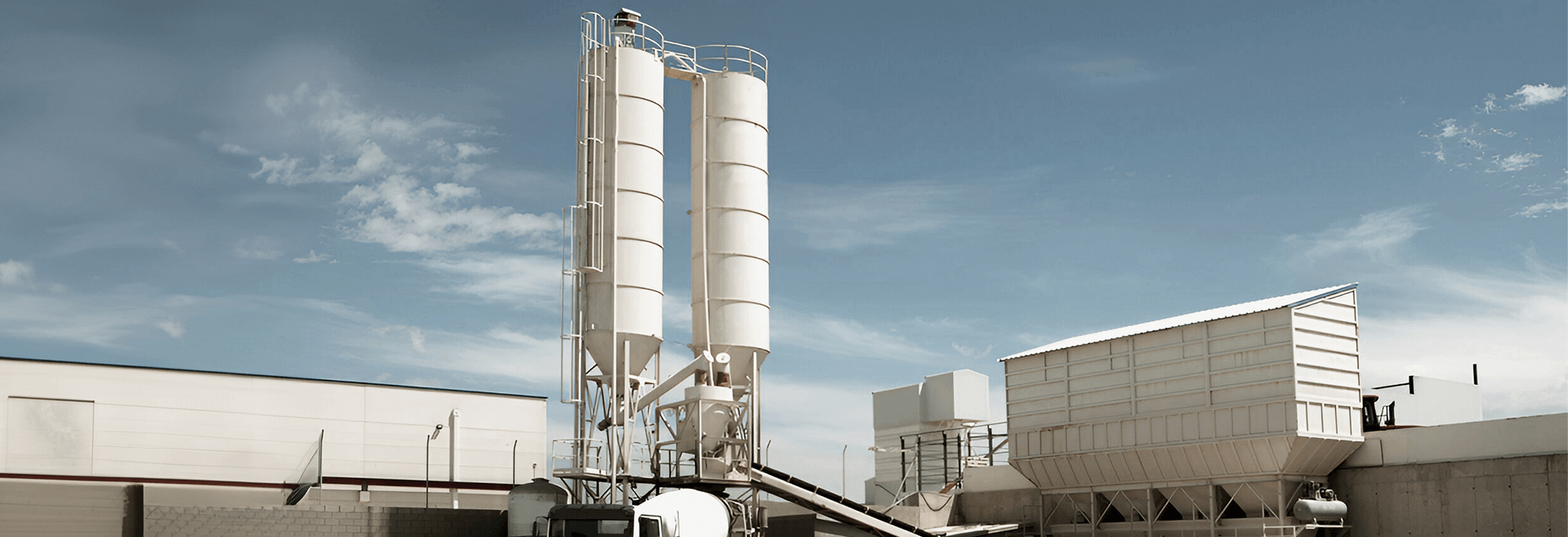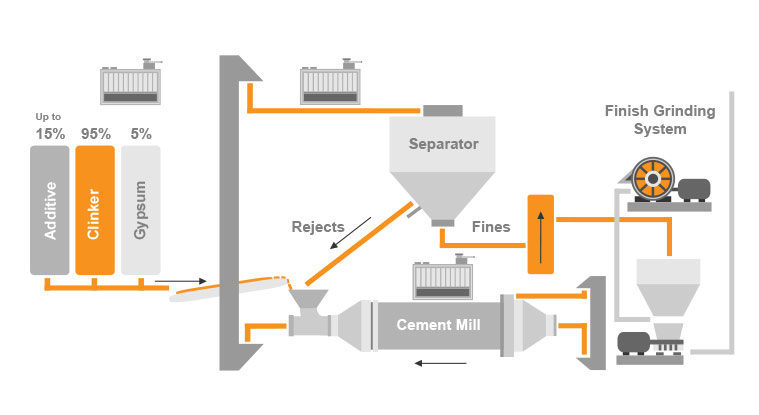
The mill is a large revolving cylinder containing steel balls that is driven by a motor. The finished cement is ground so fine that it can pass through a sieve that will hold water.

The cement grinding process is the final stage in the production of cement, where clinker particles are ground into a fine powder. This process involves the use of a cement mill, which contains grinding media (balls or cylpebs) that crush and grind the clinker particles.

The blended raw materials are then dried and ground in a raw mill to form a fine powder called raw meal. This grinding process helps in improving the chemical reactivity and uniformity of the raw materials.

The raw meal is then transported to a homogenizing silo, where it is further mixed to ensure a consistent composition. This step helps in achieving a uniform quality of the clinker produced.

The homogenized raw meal is fed into a preheating system, such as a preheater tower or a cyclone, where it is heated to high temperatures. This preheated raw meal is then fed into a rotary kiln, where it is subjected to intense heat, reaching temperatures of about 1450 degrees Celsius. This high-temperature treatment causes chemical reactions and transforms the raw meal into clinker.

The clinker produced in the rotary kiln is extremely hot and needs to be cooled down rapidly to maintain its quality. It is cooled using air or water, and the cooled clinker is then transported to a storage facility.

The cooled clinker is mixed with gypsum and other additives, such as slag, fly ash, or pozzolana, depending on the desired properties of the cement. This mixture is finely ground in a cement mill to produce cement powder. The grinding process involves the use of grinding media (balls or cylpebs) to break down the clinker particles and achieve the desired fineness.

The final cement powder is stored in silos to await packaging and transportation. is important to maintain proper storage conditions to prevent moisture absorption, which could affect the quality of the cement. The cement is then packed in bags or loaded into bulk transport containers for distribution to customers.

Throughout the cement grinding process, quality control measures are implemented to ensure that the final product meets the required specifications. These measures include regular testing of the raw materials, intermediate products, and final cement to assess factors such as chemical composition, fineness, strength, and setting time.

The cement grinding process begins with the extraction and preparation of raw materials such as limestone, clay, shale, silica, and iron ore. These materials are crushed and blended to obtain a uniform mixture.
Feel free to contact us!